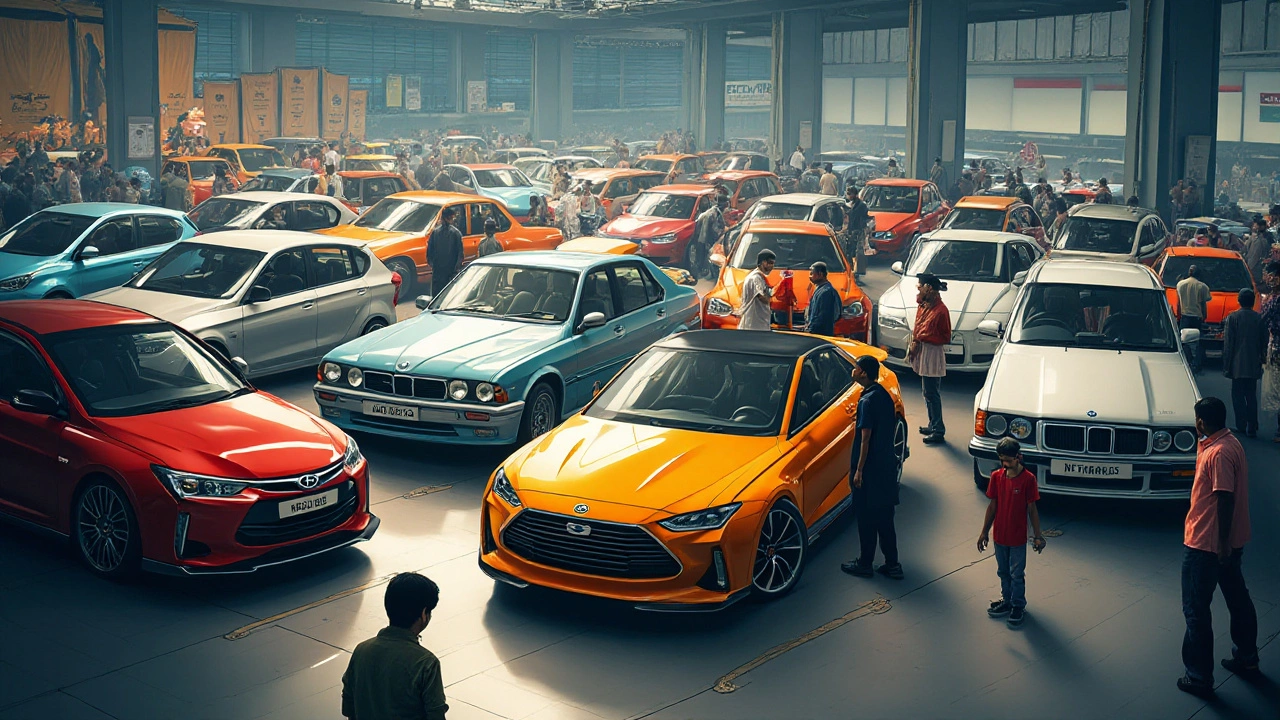Automotive Industry Insights – Trends, Brands, and Regulations in India
When discussing automotive industry, the network of companies that design, produce, and sell motor vehicles and related parts. Also known as auto sector, it spans everything from raw material extraction to showroom financing.
The Heavy Equipment, large machines such as excavators, loaders, and bulldozers used in construction and mining often shares factories and supply chains with car makers, especially when steel frames or hydraulic components are needed. At the same time, Indian Car Brands, domestic manufacturers like Tata Motors, Mahindra, and Maruti Suzuki that own design, production, and sales networks give the market its distinct character, offering models tuned to local price points and road conditions. Automotive Regulations, government rules on emissions, safety standards, and vehicle import bans dictate which models can roll off the line and which foreign cars face restrictions.
automotive industry encompasses vehicle design, manufacturing, distribution, and after‑sales service. It requires a robust supply chain that moves raw steel from iron mills, like those highlighted in our steel‑city post, to assembly plants where engines, body panels, and electronics meet. Because of that dependency, trends in steel production, plastic usage, and even textile interiors ripple through car factories.
Key Topics Covered
One major thread is the link between heavy‑equipment manufacturers and car makers. Companies such as Caterpillar and Komatsu, while known for construction machines, also produce powertrain components that end up in trucks and SUVs. Their scale influences pricing for chassis parts, which in turn affects the cost of entry‑level Indian cars.
Another focus is the rise of fully home‑grown vehicles. Articles on "Fully Made‑in‑India Cars" break down which models achieve 100 % domestic content, from the engine block to the seat fabric. This matters for buyers who value local jobs and for policymakers pushing for import‑substitution.
Regulatory trends are equally important. The "Cars Banned in India" guide explains why certain high‑performance imports never see Indian roads—emission limits, safety certifications, and luxury tax thresholds shape the lineup you’ll actually find on the market.
Supply‑chain dynamics also surface in posts about plastic consumption. The sector that uses the most plastic globally includes automotive manufacturing, where lightweight polymer components replace heavier metal parts. Understanding which industry consumes the most plastic helps predict price pressure on car interiors and fuel‑efficiency strategies.
From a consumer standpoint, the popularity of the Maruti Suzuki Swift illustrates how brand perception, pricing, and after‑sales network combine to make a model dominate Indian roads. The Swift’s success story gives a concrete example of how a well‑positioned domestic line can outshine imported rivals.
For entrepreneurs eyeing the market, the guide on launching a manufacturing business with zero experience highlights steps that are directly applicable to starting a small‑scale auto‑parts shop. It covers everything from selecting a NAICS code to sourcing raw material contracts.
Meanwhile, the high‑demand product forecast for 2025 points to electric‑vehicle batteries, advanced driver‑assist sensors, and sustainable upholstery as the next hot categories. These predictions align with the automotive sector’s push toward greener mobility.
All these pieces—heavy equipment overlap, home‑grown brands, regulation hurdles, material trends, and consumer favorites—form a web that defines today’s automotive landscape in India. The posts below dive deeper into each angle, offering data, case studies, and practical takeaways.
Ready to explore the full collection? Below you’ll find detailed analyses, market forecasts, and actionable insights that will help you understand where the Indian automotive sector is heading and how you can stay ahead of the curve.

